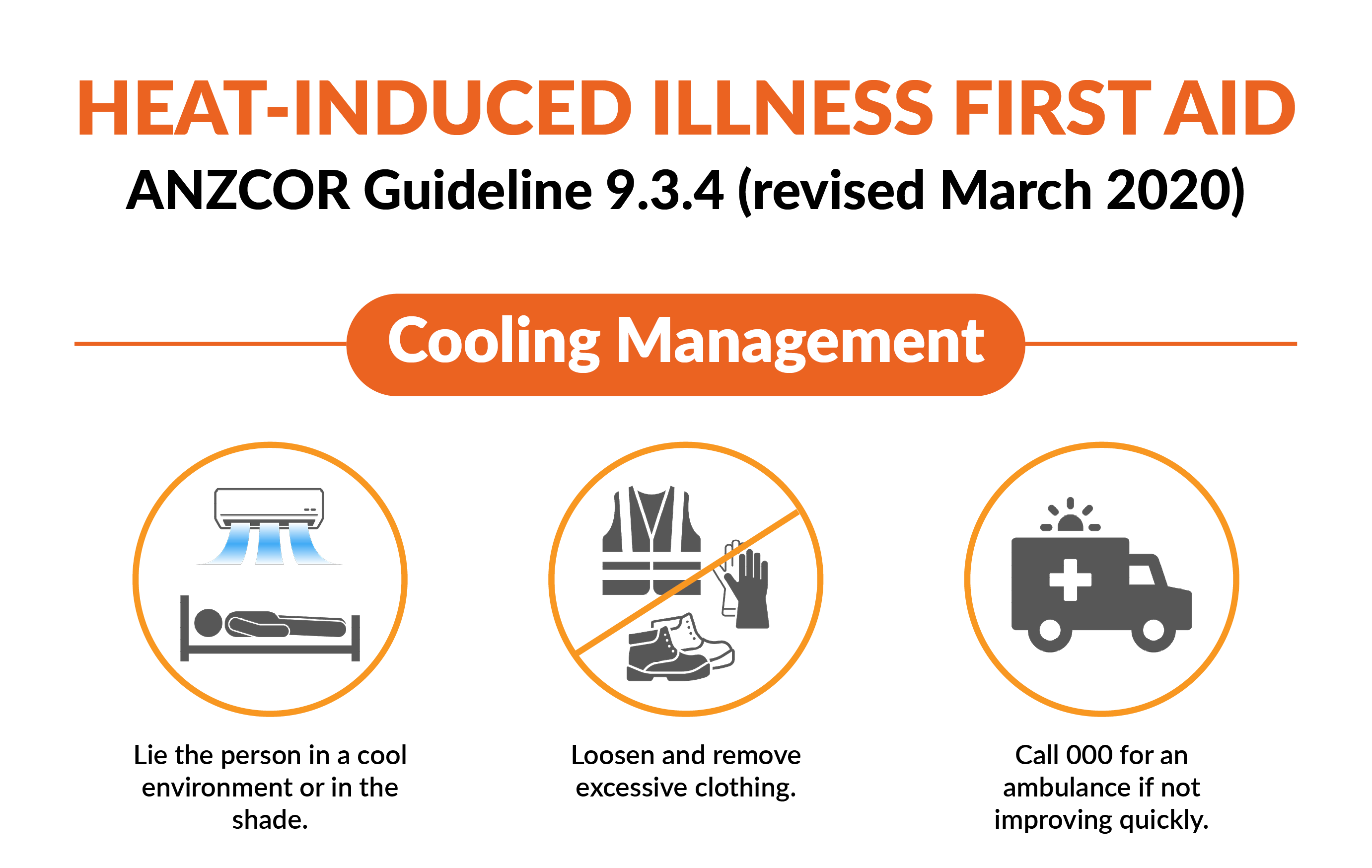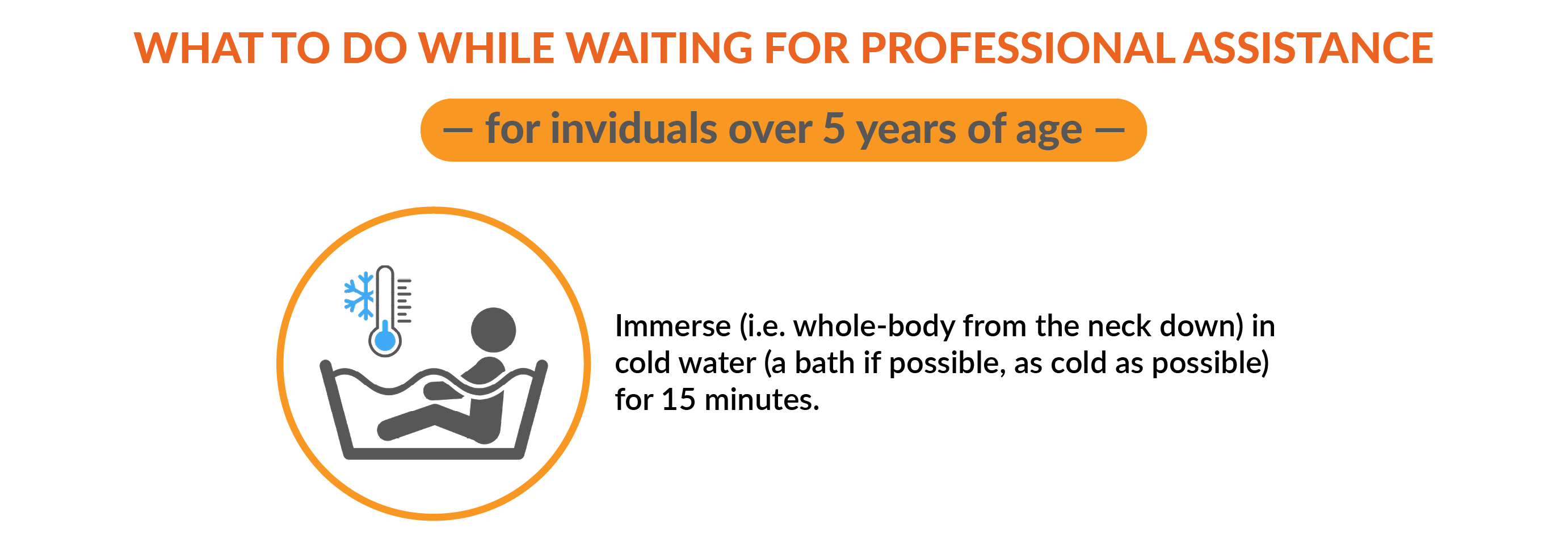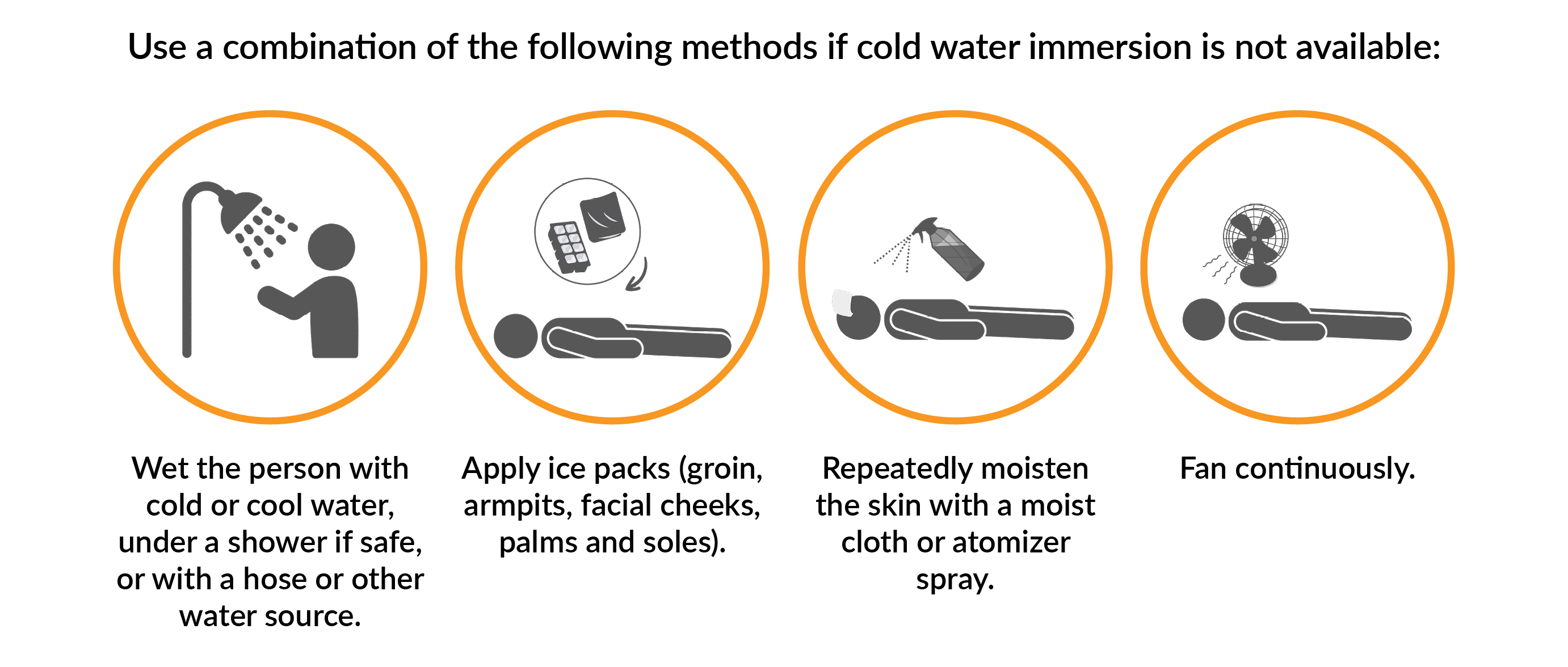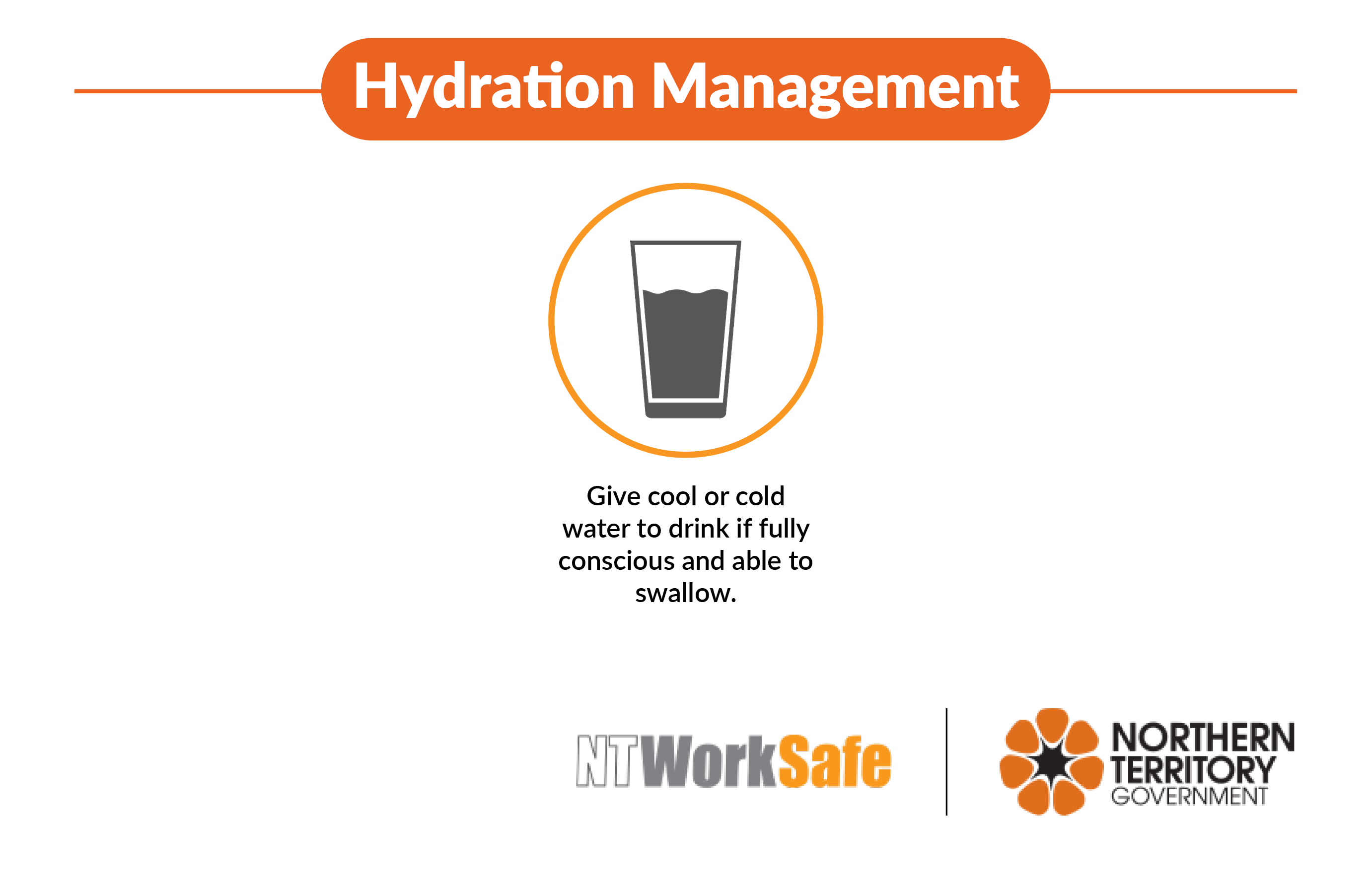Working in heat
This information bulletin provides advice about how to prevent heat illness from working outdoors in hot weather or where heat is generated as part of work. It deals with heat illness and related health and safety problems at workplaces. It contains recommended actions and measures to prevent or minimise the likelihood of heat illness.
Background
Heat illness occurs when the body cannot sufficiently cool itself. Factors that contribute to this include:
- temperature
- humidity
- amount of air movement
- radiant temperature of surroundings
- clothing
- physical activity (metabolic heat load).
Heat illness covers a range of medical conditions that can arise when the body is unable to properly cope with working in heat. These conditions include:
- heat stroke - a life threatening condition that requires immediate first aid and medical attention
- fainting
- heat exhaustion
- heat cramps
- rashes (also called prickly heat)
- heat fatigue
- worsening of pre-existing illnesses and conditions.
Signs and symptoms of heat illness include feeling sick, nauseous, dizzy or weak. Clumsiness, collapse and convulsions may also be experienced as a result of heat illness.
Workers with these signs or symptoms need to seek immediate medical attention.
Work health and safety laws require the working environment to be safe and without risks to health and safety, so far as is reasonably practicable. This applies to any risk to health and safety, including illness from working in heat.
What is the risk of heat illness occurring?
There are several factors that need to be considered when determining if there is a risk of heat illness to workers and ways to protect them.
When identifying heat hazards and controlling heat risks, workers likely to be exposed to heat as well as with their health and safety representatives (HSRs), if any, must be consulted.
Identifying heat illness hazards
Air temperature alone cannot be used to determine whether there is a risk of heat illness. The key risk factors that need to be taken into account are:
- air temperature
- humidity (in the environment or workplaces such as laundries and mines)
- radiant heat (from the sun or other sources such as furnaces and ovens)
- air movement or wind speed
- workload (nature of the work and duration)
- physical fitness of the worker (including acclimatisation and any pre-existing conditions eg overweight, heart/circulatory diseases, skin diseases or use of certain medicines)
- clothing (including protective clothing such as overalls, coveralls and suits worn during insecticide spraying).
Is there a risk of heat illness?
If there is a risk of heat illness at work, it must be controlled. Advice may be sought from a person competent in heat assessment. They can provide recommendations about how the risk can be controlled.
Any assessment should include an appropriate heat stress index. A commonly used and recognised index is the Wet Bulb Globe Temperature (WBGT). The WBGT takes into account air temperature, radiant heat, humidity and air movement. Adjustments are also made to take into account things such as physical workload, clothing and work organisation.
If a risk of heat illness is identified, control measures need to be put in place. Workers considered at risk due to factors such as pre-existing conditions should be assessed by a doctor.
Preventing heat illness
The risk can also be minimised by modifying workload. This may include:
- rescheduling work so the hot tasks are performed during the cooler part of the day
- doing the work at a different location
- wearing light clothing that still provides adequate protection
- reducing the time spent doing hot tasks (e.g. job rotation)
- arranging for more workers to do the job
- providing extra rest breaks in a cool area
- using mechanical aids to reduce physical exertion
Other measures for preventing heat illness
These measures include:
- keeping people away from hot processes
- allowing workers to acclimatise
- providing cool drinking water near the work site. During hot weather, workers should be encouraged to drink a cup of water (about 200 mL) every 15 to 20 minutes, and not rely solely on soft drinks or caffeinated drinks
- providing personal protective equipment (PPE) such as reflective aprons and face shields for reducing exposure to radiant heat. Outdoor workers should be provided with protection against ultraviolet exposure, such as wide brim hat, loose fitting, long-sleeved collared (preferably cotton) shirt and long pants, sunglasses and sunscreen
- providing workers with information, instruction and training on recognising heat-related illness and on first aid. Adequate supervision of workers is also required
- providing first aid facilities and access to medical help.
Use engineering controls to prevent or minimise heat illness
Examples include:
- increasing air movement using fans
- installing shade cloth to reduce radiant heat from the sun
- installing shields or barriers to reduce radiant heat from sources such as furnaces
- removing heated air or steam from hot processes using local exhaust ventilation
- installing air conditioners or coolers to reduce air temperature and generate air movement
- locating hot processes away from people
- insulating/enclosing hot processes or plant
- isolating workers from the hot process by locating them in air conditioned control rooms.
If symptoms occur, workers need to rest in a cool, well-ventilated area and drink cool fluids. If symptoms do not improve quickly, or skin is very hot and dry to touch, seek urgent medical help.
Plan ahead and ensure all necessary measures for preventing heat illness can be implemented when hot weather is predicted.
Heat illness first aid (ANZCOR Guideline 9.3.4)




Related health and safety problems
Apart from heat illness, hot working conditions may either contribute to or cause other health and safety problems, for example:
- loss of grip while handling tools, objects and controls due to sweaty hands
- slips, trips and falls due to fainting or fatigue
- errors/mistakes due to heat fatigue
- not following safe work procedures or cutting corners due to fatigue and/or discomfort
- not using PPE due to discomfort
- burns from contact with hot surfaces or substances.
Heat discomfort
Heat discomfort is what many people feel when it is hot. It is not a medical condition like heat illness and therefore is not considered a risk to health.
People who work in office type environments and who do very little physical work are unlikely to be at risk of suffering heat illness. What they experience as a result of higher temperature and increased humidity is likely to be heat discomfort.
Heat discomfort can generally be managed by:
- increasing air movement
- providing air conditioning (if practical)
- providing access to cool water
- wearing suitable light, loose fitting clothing.
Thermal comfort is subjective, but generally, conditions considered comfortable for people working indoors and doing light work are:
- air temperature (dry bulb temperature) 23 to 26 degrees C
- relative humidity 30 to 60 per cent.
Additional information
- Code of Practice - Managing the work environment and facilities
- Guide for managing the risks of working in heat (Safe Work Australia)
- A guide to managing heat stress 2013 (Australian Institute of Occupational Hygienists)
- Heat stress (NT Health)
- Heat stress management presentation from Dr Matt Brearley